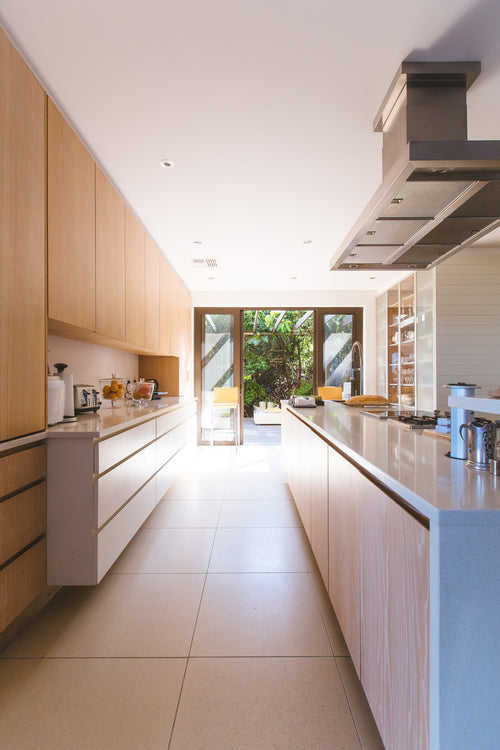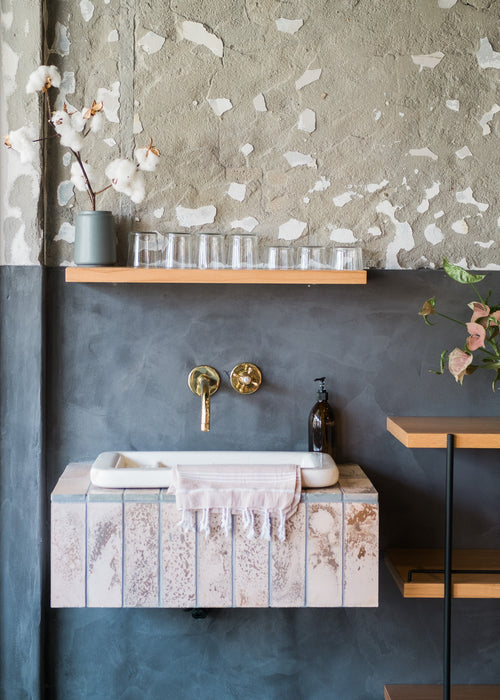3 CRUCIAL THINGS TO KNOW ABOUT TRAVERTINE BEFORE INSTALLING IN YOUR HOME

Are you dreaming of or planning for a home renovation that includes new tile floors, countertops or backsplashes? If so, you might be considering beautiful and durable travertine. Travertine is a popular choice, but it’s not ideal for every area of your home. Here, we share some important characteristics of travertine so you can make the best decision in your stone-selection process.
#1: SURFACE TEXTURE OF TRAVERTINE
Travertine tile comes from quarries all over the world, most commonly in Italy. Its primary characteristic is a surface covered in pitted holes and troughs, appearing in a concentric pattern. The natural variations in the stone make it a beautiful option for your home, but the uneven surface can attract dirt. The stone’s natural porousness also allows it to absorb liquid. As a result, you might want to think carefully before installing it in your kitchen or bath.
Travertine can be utilized in a rougher, more organic finish, or polished to be smooth and glossy. Some travertines also have synthetic fillers to help smooth the surface. No matter what surface texture you choose, it is crucial to use a penetrating natural stone sealer to protect it and keep it looking like new.
#2: DURABILITY OF TRAVERTINE
Travertine is simultaneously durable yet delicate. It is often used for floors with lots of foot traffic because it can hold up to long-term wear and tear. However, it’s less hard than granite, and is prone to acid-etching and staining. Because of this fact, we recommend careful consideration when using travertine tile in areas where a lot of moisture is present, or where it may come into frequent contact with acidic substances or liquid spills (like a kitchen countertop).
While travertine can and should be sealed to make it less porous, there are other stones that are just as beautiful that make a more optimal choice for bathrooms or kitchen counters. Some people do use travertine in their shower or bath area; if you decide to install it, be sure to use a penetrating sealer with a non-glossy finish. Sealing polished travertine with a high-gloss surface sealer will render it extremely slippery, making it an unsafe choice for your shower floor.
It’s also important to take your lifestyle into account when considering travertine anywhere in your home. For example, if you have pets that sometimes have accidents indoors, the acidic content of their urine could permanently damage a travertine tile floor.
#3: KEEPING TRAVERTINE CLEAN
Travertine comes in a beautiful variety of colors, with creamy, warm tones from tan to light brown being most common. To keep it looking gorgeous, it’s important to know how to clean it properly. As we mentioned above, travertine is easily etched and stained, so avoid using acidic or corrosive cleaners like bleach or ammonia. Also, because of its porous nature, you won’t want to use a lot of water in your cleaning process. Excess water can stain travertine and contribute to bacterial growth in the pores of the stone.
Start by sweeping or brushing off debris, dust and dirt with a dry broom or cloth (a high-quality microfiber cloth like the one included here is a great choice). Then, make a simple solution of mild dish soap and warm water. Wring out your cloth or mop as much as possible to reduce the amount of water on your surface, then gently wipe the surface, repeating as necessary. Finish your cleaning routine with a layer of non-toxic sealer to protect your travertine and keep it cleaner for a longer period of time.
Travertine tile is beautiful and versatile, provided you choose the right finish and treat and seal it properly. Ultimately, we believe that any stone you choose is the right stone for your space—you just have to be informed and prepared for the level of maintenance a particular stone like travertine might require.



